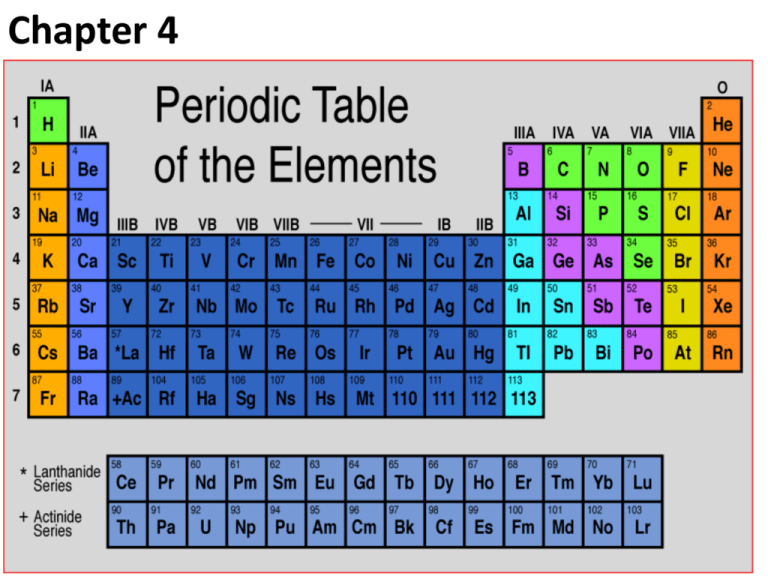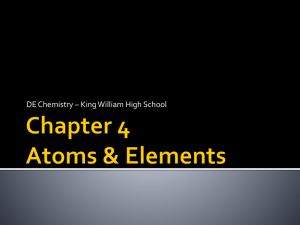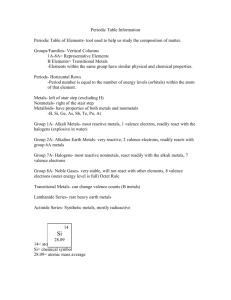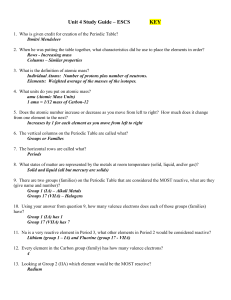Periodic Table Groups
advertisement

Chapter 4 Learning Objectives • Understand the development and need for the periodic table • Identify the properties and locations of families on the periodic table • Identify trends of atomic properties Dmitri Mendeleev 1869 63 known Elements Arranged by atomic mass Henry Moseley • 1913 • Organized elements by atomic number rather than atomic mass Modern Versions – all follow the periodic law Theorodore Benfrey - 1960 Timothy Stowe ADOMAH – good for electron config. Why do the properties of elements repeat themselves at regular intervals? Valence Electrons Groups Periods Main-Group Elements • Wide range of properties – Solids, liquids, gases – About half are metals – Many are very reactive, some are not reactive – Silicon and oxygen account for four of every five atoms found on or near Earth’s surface Group 1 – Alkali Metals • • • • • React with water to form alkaline solutions One valence electron – very reactive Not found in nature as pure elements Metals are very soft, easily cut with a knife Good conductors of electricity Group 2 – Alkaline-Earth Metals • Slightly less reactive than alkali metals – (still very reactive) • Two valence electrons • Harder than alkali metals, higher melting points • Last one in the family, Radium is radioactive Metals • • • • Excellent conductors of electricity Conductors of heat Some are ductile (can be drawn into a wire) Some are malleable (can be hammered or rolled into sheets) Mg Sr Hg Transition Metals • Group members do not have identical electron configurations • May lose different numbers of valence electrons during reactions • Less reactive than Group 1&2 • Gold, platinum, and palladium are the least reactive TMs • Good conductors of heat • Ductile and malleable NonMetals • • • • • C, N, O, P, S, Se Not good conductors of heat or electricity Brittle No metallic luster Most abundant elements on earth Metalloids • B, Si, Ge, As, Sb, Te, Po • Behave like nonmetals chemically and physically • Electrical conductivity like metals • Semiconductors – conduct electricity weakly Group 7 - Halogens • • • • • Most reactive group of non-metals Seven valence electrons (one short of stable) F2, Cl2 are gases at RT Br2 is a liquid at RT I2 and At2 are solids at RT Group 8 – Noble Gases • Also known as noble gases • Mostly unreactive – Full set of electrons in outer shell Lanthanides and Actinides • Fill “f” orbitals • Called Lanthanides because they follow Lanthanum on the periodic table • Actinides follow – Actinium • All actinides are radioactive (unstable nuclei) • Shiny metals • Similar in reactivity to alkaline-earth metals Atomic Radius • How do you measure the radius of an atom? Atomic Radius • One way - Bond Radius Atomic Radius Trends Ionization Energy • The energy required to remove an electron from an atom of an ion Ionization Energy Trends Electron Affinity • The energy change that occurs when a neutral atom gains an electron Electronegativity • A measure of the ability of an atom in a compound to attract electrons Electronegativity • Why is the no color-coding for He, Ne, and Ar?







